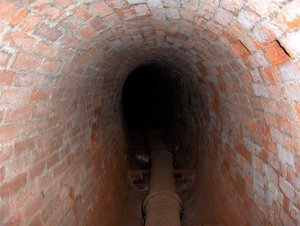Difference between revisions of "Multi-cache"
m |
Pickupfamily (talk | contribs) (More description including link to protected waypoint) |
||
| (4 intermediate revisions by 3 users not shown) | |||
| Line 3: | Line 3: | ||
A [[multi-cache]] is a [[geocache]] that has more than one [[waypoint]]. | A [[multi-cache]] is a [[geocache]] that has more than one [[waypoint]]. | ||
So, instead of going straight to the cache, you'll go to a waypoint where you'll find something that will help you get to the next waypoint, and so on. | So, instead of going straight to the cache, you'll go to a waypoint where you'll find something that will help you get to the next waypoint, and so on. | ||
| + | |||
| + | The [[coordinates]] for each intermediate [[waypoint]] may need to be calculated based on data from the previous waypoint(s), in which case you need to visit the waypoints in order. | ||
| + | |||
| + | Or the [[coordinates]] for all the of the intermediate [[waypoint]]s might be provided on the [[cache page]], so you can visit the waypoints in any order, collecting the data you need to calculate the co-ordinates for [[GZ]]. | ||
Most [[multi-cache]]s have 2-5 waypoints. | Most [[multi-cache]]s have 2-5 waypoints. | ||
| − | An offset cache is usually a multi that has only | + | The information you need to collect at each waypoint may be explained explicitly on the [[cache page]] or you may need to do some searching and creative thinking, depending on the [[difficulty]] of the [[multi-cache]]: |
| + | * you may need to count something (e.g. the number of strips on a pole) or read a number off an existing sign or label | ||
| + | * find data hidden in a container or other label hidden by the [[owner|cache owner]] | ||
| + | |||
| + | The information you find might be substituted directly into the [[coordinates]] (with some simple maths), or you may have to [[projected waypoint|project a waypoint]] to get to the next [[waypoint]] or [[GZ]]. | ||
| + | |||
| + | Of course the more difficult [[multi-cache]]s can be quite diabolical! | ||
| + | |||
| + | An [[offset cache]] is usually a multi that has only 1 other location to find after decoding, updating or entering the co-ords given at the first location. | ||
==Examples== | ==Examples== | ||
| − | * | + | * Somebody please add one or two |
==See Also== | ==See Also== | ||
| − | * [[Cache type]] | + | * [[Cache type]]s |
| + | * Entering [[Additional waypoints]] (for gc.com caches) | ||
Latest revision as of 10:54, 17 June 2007
A multi-cache is a geocache that has more than one waypoint. So, instead of going straight to the cache, you'll go to a waypoint where you'll find something that will help you get to the next waypoint, and so on.
The coordinates for each intermediate waypoint may need to be calculated based on data from the previous waypoint(s), in which case you need to visit the waypoints in order.
Or the coordinates for all the of the intermediate waypoints might be provided on the cache page, so you can visit the waypoints in any order, collecting the data you need to calculate the co-ordinates for GZ.
Most multi-caches have 2-5 waypoints.
The information you need to collect at each waypoint may be explained explicitly on the cache page or you may need to do some searching and creative thinking, depending on the difficulty of the multi-cache:
- you may need to count something (e.g. the number of strips on a pole) or read a number off an existing sign or label
- find data hidden in a container or other label hidden by the cache owner
The information you find might be substituted directly into the coordinates (with some simple maths), or you may have to project a waypoint to get to the next waypoint or GZ.
Of course the more difficult multi-caches can be quite diabolical!
An offset cache is usually a multi that has only 1 other location to find after decoding, updating or entering the co-ords given at the first location.
Examples
- Somebody please add one or two
See Also
- Cache types
- Entering Additional waypoints (for gc.com caches)
